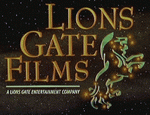The Cat's Meow (2001) |
|
The Cat's Meow (2001) |
|


|
| BUY IT |
| General | Extras | ||
| Category | Drama |
Main Menu Audio Audio Commentary Featurette-Making Of Featurette-Seein' Stars - 1919 Newsreel Interviews-Cast & Crew Theatrical Trailer Featurette-Chaplin Short - "Behind The Screen" Trailer-Till Human Voices Wake Us; The Navigators; The Tracker Trailer-Satin Rouge; Yi Yi DVD Credits |
|
| Rating |

|
||
| Year Of Production | 2001 | ||
| Running Time | 109:11 | ||
| RSDL / Flipper | RSDL (77:56) | Cast & Crew | |
| Start Up | Menu | ||
| Region Coding | 1,2,3,4,5,6 | Directed By | Peter Bogdanovich |
|
Studio
Distributor |
 Madman Entertainment |
Starring |
Kirsten Dunst Eddie Izzard Edward Herrmann Cary Elwes Joanna Lumley Jennifer Tilly |
| Case | Amaray-Transparent-Secure Clip | ||
| RPI | ? | Music | Ian Whitcomb |
| Video | Audio | ||
| Pan & Scan/Full Frame | None |
English Dolby Digital 5.1 (448Kb/s) English Audio Commentary Dolby Digital 2.0 (224Kb/s) English Dolby Digital 2.0 (224Kb/s) |
|
| Widescreen Aspect Ratio | 1.78:1 | ||
| 16x9 Enhancement |
 |
||
| Video Format | 576i (PAL) | ||
| Original Aspect Ratio | 1.85:1 | Miscellaneous | |
| Jacket Pictures | No | ||
| Subtitles | English for the Hearing Impaired | Smoking | Yes, including marijuana. |
| Annoying Product Placement | No | ||
| Action In or After Credits | No | ||
This movie is based on a true story — or rather is the fictional proposition as to what might have occurred, based around a few known facts. To explain the premise of The Cat's Meow, it is probably best to start with an explanation. "The Cat's Meow" is an old saying that means that something is very good, in a similar fashion to the still-used "bees knees". Why is that important? Well, that is what everyone thought of a weekend spent on the yacht of powerful media mogul William Randolph Hearst (Edward Herrmann), celebrating the birthday of waning movie mogul Thomas Ince (Cary Elwes) — he who built Culver city, pioneered the cowboy genre, and is credited with inventing the studio system. The problem is that one of the passengers (while history buffs will know who the soon-to-be-deceased party guest is, it is best left unsaid for those who do not) was not going to survive the weekend. This much is established in the opening scene, at the funeral of the deceased. The rest of the movie, told in flash back, covers the events leading up to the death, but more importantly plays around with the truth, creating a fantasy of "what if". What is known about the time is that Hearst's mistress Marion Davies (Kirsten Dunst) was probably carrying on an affair with Charlie Chaplin (Eddie Izzard), while Ince's studios were close to going under. It is on these very slim facts that the play of the characters, and the interactions that all lead to the death, are based.
The sole reason The Cat's Meow works is the strength of its cast. There is not a weak link to be found, from Kirsten Dunst, proving once again that she has the talent to match her looks, to Edward Herrmann and Eddie Izzard successfully playing not particularly likeable historical characters (Hearst was a vicious manipulator, while Chaplin a lecherous man whose devotion to his own image was the only thing that outweighed his devotion to chasing skirt) with heart, and in convincingly sympathetic manners. Joanna Lumley and Jennifer Tilly have small, and somewhat superfluous roles, but still manage to make their presence felt. The most engaging performance of all is that of the always-likeable Cary Elwes, who proves here that the depths to which his career has fallen to are at least not the result of lack of talent.
The Cat's Meow is, however, far from "purr-fect" (contrary to the quote from Empire magazine on the back of the slick). The largest problem is that while the event on which this movie is based is certainly a tragedy, the lifestyles lead by the people of the story are so decadent and so out of touch with the values and lives of real people (as in, those who are not enormously wealthy, or famous, or both) that it is hard to find sympathy for any of them. To a large extent, any and all of them would have deserved the untimely end, and the self-pity and sorrow they feel for themselves only makes the situation worse. There is nothing less worthy of sympathy than someone who has achieved their dreams and is sad as they have nothing left to do — and that is the situation many of the characters in this story find themselves in. This lack of sympathy and feeling has the effect of distancing audiences from the characters, making it that much harder to become involved in the drama.
Despite these disadvantages, The Cat's Meow is still a very good movie that is well worth checking out, as it provides some very well written and detailed characters, as well as some brilliant performances — and it has the added benefit of being based on an event that really happened, and with real people. The tag-line of the movie is "the whisper told most often" about the fateful events aboard the Hearst yacht — and now, thanks to this movie, the whisper has become a more concrete statement.
Presented at 1.78:1, which is a slight change from the original theatrical ratio of 1.85:1 (most likely from opening the mattes), it is 16x9 enhanced.
The transfer is nicely sharp, with the intricate detail of the period costumes, and opulent sets, standing out nicely. There are only a few instances of noticeable grain, the most obvious coming in shots of the coffin, such as at 3:45. Shadow detail is also good, with the more darkly lit scenes showing up quite nicely. There are a few problems with very dark areas of the image, but there is never any action obscured, so it has little effect. There is no low level noise present.
Colours are quite well represented. This movie continues Peter Bogdanovich's experiments with "black and white in colour", and as such, the costumes are only in black or white, while the sets make only very subtle use of colour. In fact, there is almost no use of vibrant colours at all, with only the deep golden brown of the wood on the boat livening the stark colouring.
There are no compression artefacts in this film. Aliasing, on the other hand, does make a number of appearances. The worst instance, on the patterns of Louella Parsons' cardigan from 86:10 to 88:27, is very distracting, but the remaining instances (such as on the car at 16:48, or the book at 79:31) are quite mild and not too obvious. Film artefacts are a little too common to be excusable, especially for such a recent film. Most are small and difficult to spot, but at times they come in such large numbers at once, or are large enough on their own (the large blob at 21:09), that they can be distracting.
The subtitles are generally accurate, although they move a little too fast to make them comfortable to read.
This is an RSDL formatted disc with the layer change taking place at 77:56 between chapters 17 and 18. This is a poorly placed change, coming in the first few seconds after a scene transition, and interrupting motion, making it quite easy to spot.
| Sharpness | |
| Shadow Detail | |
| Colour | |
| Grain/Pixelization | |
| Film-To-Video Artefacts | |
| Film Artefacts | |
| Overall |
There are three audio tracks present on this disc. These consist of the original English dialogue in both Dolby Digital 5.1 (at 448 kbps) and Dolby Digital 2.0 stereo (at 224 kbps), and an English audio commentary track in Dolby Digital 2.0 stereo (at 224 kbps).
Dialogue is mostly clear and easy to understand. There are a few exceptions in the 5.1 track, usually to do with the dialogue of Kirsten Dunst being very low and hard to hear. This is largely due to the entire track being at a very low level - especially compared to the 2.0 track - but some is inherent in the dialogue recording. Additionally, there are a few times when it tends to sound "over-compressed", such as at 94:02, with a slight distortion to the higher frequencies of the dialogue. This problem is not present in the 2.0 track.
Like the dialogue, the audio sync is mostly good, but again there are a few times where it becomes noticeably out, the worst being from 91:37 to 91:43, and from 94:29 to 94:36. The second half of the movie contains more sync problems than the first.
The music is credited to Ian Whitcomb, but there is no "score" as such. All the music used is period music, and while the guests are on the boat, it is set up such that the audience expects the music to be "piped" around through speakers systems throughout the boat — any music heard is supposed to be coming from those speakers. This is actually quite effective, as there are only a very few moments when there is no music playing during the movie, but when present, it is does not sound as expected.
The surround channels are not totally forgotten, although they do not have a large amount to do, as for the most part they remain silent, but do carry some ambient noise, and music, from time to time.
The subwoofer has little to do during this feature, as there is almost no bass in the music, and few other sounds with deep bass. About the only time it really comes alive is during the tour of the engine room.
| Dialogue | |
| Audio Sync | |
| Clicks/Pops/Dropouts | |
| Surround Channel Use | |
| Subwoofer | |
| Overall |
NOTE: To view non-R4 releases, your equipment needs to be multi-zone compatible and usually also NTSC compatible.
The video is a little disappointing, containing too many film artefacts, and a not insubstantial amount of aliasing, although it is otherwise good.
The audio quality is also a little disappointing, with some dialogue being very hard to make out, and some audio sync problems.
The extras are quite interesting, and there is a good selection of them, including some very interesting early silent movie footage.
| Video | |
| Audio | |
| Extras | |
| Plot | |
| Overall |
| Review Equipment | |
| DVD | Pioneer DV-535, using Component output |
| Display | Loewe Xelos 5381ZW. Calibrated with Video Essentials. This display device is 16x9 capable. |
| Audio Decoder | Built in to amplifier/receiver. Calibrated with Video Essentials. |
| Amplification | Onkyo TX-DS787, THX Select |
| Speakers | All matching Vifa Drivers: centre 2x6.5" + 1" tweeter (d'appolito); fronts and rears 6.5" + 1" tweeter; centre rear 5" + 1" tweeter; sub 10" (150WRMS) |